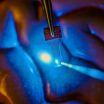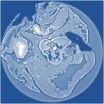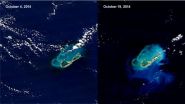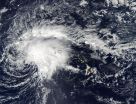(Press-News.org) MADISON, Wis. — Developing invisible implantable medical sensor arrays, a team of University of Wisconsin-Madison engineers has overcome a major technological hurdle in researchers' efforts to understand the brain.
The team described its technology, which has applications in fields ranging from neuroscience to cardiac care and even contact lenses, in the Oct. 20 issue of the online journal Nature Communications.
Neural researchers study, monitor or stimulate the brain using imaging techniques in conjunction with implantable sensors that allow them to continuously capture and associate fleeting brain signals with the brain activity they can see. However, it's difficult to see brain activity when there are sensors blocking the view.
"One of the holy grails of neural implant technology is that we'd really like to have an implant device that doesn't interfere with any of the traditional imaging diagnostics," says Justin Williams, a professor of biomedical engineering and neurological surgery at UW-Madison. "A traditional implant looks like a square of dots, and you can't see anything under it. We wanted to make a transparent electronic device."
The researchers chose graphene, a material gaining wider use in everything from solar cells to electronics, because of its versatility and biocompatibility. And in fact, they can make their sensors incredibly flexible and transparent because the electronic circuit elements are only 4 atoms thick—an astounding thinness made possible by graphene's excellent conductive properties. "It's got to be very thin and robust to survive in the body," says Zhenqiang (Jack) Ma, a professor of electrical and computer engineering at UW-Madison. "It is soft and flexible, and a good tradeoff between transparency, strength and conductivity."
Drawing on his expertise in developing revolutionary flexible electronics, he, Williams and their students designed and fabricated the microelectrode arrays, which — unlike existing devices — work in tandem with a range of imaging technologies. "Other implantable microdevices might be transparent at one wavelength, but not at others, or they lose their properties," says Ma. "Our devices are transparent across a large spectrum — all the way from ultraviolet to deep infrared. We've even implanted them and you cannot find them in an MR scan."
The transparent sensors could be a boon to neuromodulation therapies, which physicians increasingly are using to control symptoms, restore function, and relieve pain in patients with diseases or disorders such as hypertension, epilepsy, Parkinson's disease, or others, says Kip Ludwig, a program director for the National Institutes of Health neural engineering research efforts. "Despite remarkable improvements seen in neuromodulation clinical trials for such diseases, our understanding of how these therapies work — and therefore our ability to improve existing or identify new therapies — is rudimentary."
Currently, he says, researchers are limited in their ability to directly observe how the body generates electrical signals, as well as how it reacts to externally generated electrical signals. "Clear electrodes in combination with recent technological advances in optogenetics and optical voltage probes will enable researchers to isolate those biological mechanisms. This fundamental knowledge could be catalytic in dramatically improving existing neuromodulation therapies and identifying new therapies."
The advance aligns with bold goals set forth in President Barack Obama's BRAIN (Brain Research through Advancing Innovative Neurotechnologies) Initiative. Obama announced the initiative in April 2013 as an effort to spur innovations that can revolutionize understanding of the brain and unlock ways to prevent, treat or cure such disorders as Alzheimer's and Parkinson's disease, post-traumatic stress disorder, epilepsy, traumatic brain injury, and others.
While the team centered its efforts on neural research, they already have started to explore other medical device applications. For example, working with researchers at the University of Illinois-Chicago, they prototyped a contact lens instrumented with dozens of invisible sensors to detect injury to the retina; the UIC team is exploring applications such as early diagnosis of glaucoma.
INFORMATION:
Additional authors on the Nature Communications paper include UW-Madison electrical and computer engineering graduate students Dong-Wook Park and Solomon Mikael, materials science graduate student Amelia A. Schendel, biomedical engineering research specialist Sarah K. Brodnick; biomedical engineering graduate students Thomas J. Richner, Jared P. Ness and Mohammed R. Hayat; collaborators Farid Atry, Seth T. Frye and Ramin Pashaie of the University of Wisconsin-Milwaukee; and Sanitta Thongpang of Mahidol University in Bangkok, Thailand.
The researchers are patenting their technology through the Wisconsin Alumni Research Foundation. Funding for the research came from the U.S. Defense Advanced Research Projects Agency, the National Institutes of Health, and the U.S. Office of Naval Research.
— Renee Meiller, 608-262-2481, meiller@engr.wisc.edu
WASHINGTON D.C. Oct. 21, 2014 -- The most obvious effects of too much sun exposure are cosmetic, like wrinkled and rough skin. Some damage, however, goes deeper—ultraviolet light can damage DNA and cause proteins in the body to break down into smaller, sometimes harmful pieces that may also damage DNA, increasing the risk of skin cancer and cataracts. Understanding the specific pathways by which this degradation occurs is an important step in developing protective mechanisms against it.
Researchers from the École Polytechnique Fédérale de Lausanne ...
By analysing DNA extracted from the petrous bones of skulls of ancient Europeans, scientists have identified that these peoples remained intolerant to lactose (natural sugar in the milk of mammals) for 5,000 years after they adopted agricultural practices and 4,000 years after the onset of cheese-making among Central European Neolithic farmers.
The findings published online in the scientific journal Nature Communications (21 Oct) also suggest that major technological transitions in Central Europe between the Neolithic, Bronze Age and Iron Age were also associated with ...
WASHINGTON, D.C., October 21, 2014 -- X-ray phase tomography is an imaging technique that uses penetrating X-rays to create volumetric views through "slices" or sections of soft biological tissues, such as tumors, and it offers strongly enhanced contrast compared to conventional CT scans. Yet scientists still do not know which X-ray phase tomography methods are best suited to yield optimized results for a wide variety of conditions.
To answer this question, a large group of researchers in Europe set out to compare three different X-ray phase tomography methods at the ...
WASHINGTON, D.C., October 21, 2014 -- Hikers are generally advised that the weight of the packs they carry should correspond to their own size, with smaller individuals carrying lighter loads. Although petite backpackers might appreciate the excuse to hand off heavier gear to the larger members of the group, it turns out that they may not need the help.
While leading students on extended backpacking trips for Outward Bound, Kansas State University physics professor Michael O'Shea noticed that some of the smaller students could comfortably carry a greater pack weight than ...
VIDEO:
Chapman University has initiated the first comprehensive nationwide study on what strikes fear in Americans in the first of what is a planned annual study. The Chapman Survey on American...
Click here for more information.
ORANGE, Calif. – Chapman University has initiated the first comprehensive nationwide study on what strikes fear in Americans in the first of what is a planned annual study. According to the Chapman poll, the number one fear in America today ...
A team of researchers led by NOAA's Office of National Marine Sanctuaries have discovered two significant vessels from World War II's Battle of the Atlantic. The German U-boat 576 and the freighter Bluefields were found approximately 30 miles off the coast of North Carolina. Lost for more than 70 years, the discovery of the two vessels, in an area known as the Graveyard of the Atlantic, is a rare window into a historic military battle and the underwater battlefield landscape of WWII.
"This is not just the discovery of a single shipwreck," said Joe Hoyt, a NOAA sanctuary ...
NASA's Aqua and Terra satellites captured before and after images of Bermuda and surrounding waters before and after Hurricane Gonzalo struck the island on Oct. 17. The images revealed how Gonzalo stirred up the sediment from the ocean bottom.
The MODIS instrument or Moderate Resolution Imaging Spectroradiometer that flies aboard NASA's Aqua and Terra satellites provided imagery of Bermuda and the stirred sediment. In a comparison of imagery before and after Hurricane Gonzalo passed, the after image showed sediment streaming east and south of Bermuda. The MODIS instrument ...
Slow-moving Tropical Storm Ana was still affecting parts of Hawaii on Oct. 20 when NASA's Aqua satellite passed overhead from its orbit in space. Imagery from Aqua showed that wind shear was affecting the storm.
The Moderate Resolution Imaging Spectroradiometer or MODIS instrument aboard NASA's Aqua satellite captured a visible picture of Tropical Storm Ana over Hawaii on Oct. 20 at 23:55 UTC (7:55 p.m. EDT). The image showed that most of the clouds and showers were north and east of the center of circulation, pushed away from the center by strong southwesterly wind ...
CHAMPAIGN, Ill. — Publicly traded corporations are increasingly publishing social responsibility reports for investors, who now consider such information alongside traditional financial data before investing in a company.
But according to new research from a University of Illinois expert in financial reporting and financial statement analysis, less-numerate investors are more susceptible to style and presentation effects of the reports, potentially leading them to make unintended judgments about the company.
W. Brooke Elliott, a professor of accountancy at Illinois, ...
CHICAGO –A new study in the Journal of Food Science, published by the Institute of Food Technologists (IFT), evaluated consumers' choice in fresh tomato selection and revealed which characteristics make the red fruit most appealing.
The researchers found that the most important fresh tomato attributes were color, amount of juice when sliced and size. Consumers were most drawn to fresh tomatoes shown to be red, firm, medium/small sized, crisp, meaty, and that contain few seeds.
The study also found that a lack of characteristic taste and flavor – including ...








